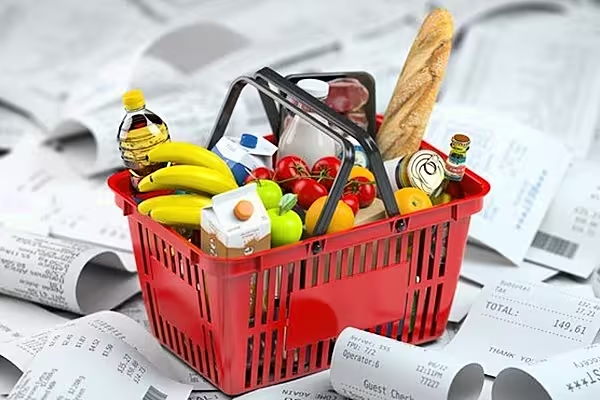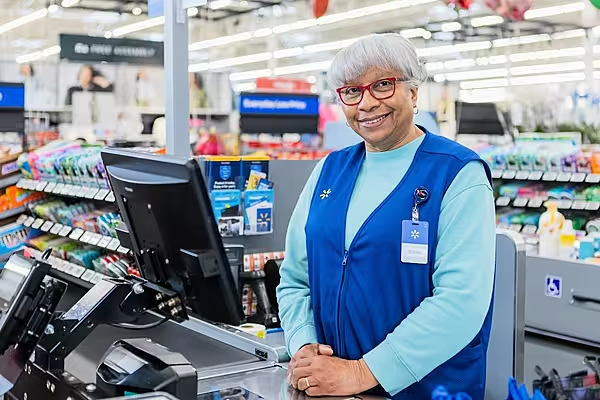As the world becomes more digitally driven than ever, it's no surprise that most daily activities occur online or on mobile devices, and grocery shopping is no different. Emily Newton reports.
Online shopping has dramatically changed in the last couple of years, especially in light of the COVID-19 pandemic. Stuck at home, increased numbers of consumers turned to their computers or phones to order groceries from websites like Instacart, or food delivery apps such as Uber Eats, DoorDash or GoPuff.
With this in mind, a growing cohort of consumers would rather order groceries online for delivery or curbside pickup. Why are e-grocery stores becoming more popular, and what should buyers in the grocery retail sector know about this trend?
The Rise of Online Grocery Shopping
The e-commerce sector is advancing rapidly and developing in virtually every industry, from food retailing to consumer electronics. It’s becoming increasingly common for consumers to purchase goods and services online instead of visiting a bricks-and-mortar store.
A hot topic in the fast-moving consumer goods (FMCG) world is e-grocery stores, also called digital or online grocery stores. According to Statista, there are roughly 150 million shoppers in this industry’s customer base.
In addition, research from Mercatus suggests that online grocery sales are projected to reach $250 billion (€237.1 billion) by 2025, highlighting how often consumers purchase their groceries and other essential items online. Online grocery shopping is here to stay.
Challenges Consumers Face While Shopping On An E-Grocery Platform
Despite massive growth in the e-grocery store market, consumers still face obstacles throughout the customer journey. Let's take a deeper look at the challenges people grapple with when shopping online.
Handpicking Products
Some consumers enjoy the concept of handpicking items at the grocery store. However, if they value next-level convenience over the ability to handpick products, they will likely decide to order groceries online.
For example, produce can often vary in quality, so customers might want to pick avocados before they’re ripe or bananas with fewer brown spots than others. Online shopping cannot fully replace the human experience of buying groceries in person.
Receiving Promotions or Discounts
There may be discounts or promotions within a store that online consumers cannot take advantage of, which could prompt them to do their grocery shopping elsewhere.
Shopping online might offer customers some coupons or discounts, but it's nearly impossible to match the instant gratification of in-store savings.
Poor Personalisation
Many professionals understand that the average consumer buys the same groceries weekly or monthly. Some new products or different brands may be thrown into the mix, but for the most part, consumers return to their preferred grocery store to buy their favourites.
Shoppers enjoy personalised experiences. Currently, e-grocery stores do not provide as much personalisation as consumers want. Apps and websites should offer specific and relevant product recommendations instead of order history. Advanced technologies like AI and ML are available to help food retailers determine which products customers prefer when shopping online.
Outdated or Incorrect Inventory Levels
There's nothing more frustrating than submitting an online order and finding out a product is out of stock or a service is currently unavailable. Unfortunately, modern consumers still deal with this on their e-grocery apps and websites.
One solution e-grocery stores can implement is a real-time inventory tracking system. This would monitor availability and ensure the company’s platform displays the most up-to-date information.
E-Grocery Stores To Watch In 2023
There are several major players in the e-grocery store market. In addition to these companies, more food retailers are investing in the buy online, pickup in-store (BOPIS) model, which consumers are showing interest in. Here are some of the top e-grocery stores to be aware of in 2023.
Walmart
Walmart, the juggernaut food retailer, offers online shopping for its customers. Shoppers can choose a BOPIS approach or go inside a Walmart location to pick up their orders. One of the most attractive offers is the buy online and pickup same-day option.
Walmart launched its Express Delivery service, which delivers orders to customers within one hour, to compete with Amazon Prime Now. Other benefits include a Walmart+ membership, Walmart+ Mobile Scan & Go and Walmart InHome delivery service.
Amazon
Amazon Prime Now offers fast grocery delivery and pickup services for Prime members. Amazon acquired Whole Foods five years ago, and the high-end grocer has made many changes since then. The deal was signed for $13.7 billion, which was by far the largest acquisition ever for Amazon.
Since millions of people subscribe to Amazon Prime already, it was a no-brainer for the giant corporation to dip its toes into the e-grocery market.
Instacart
Instacart is another major player in the e-grocery store market. It has no physical locations, but the service hires shoppers to handle orders. They are responsible for the shopping aspect of the order, as well as delivering it to a customer’s doorstep.
Instacart is heading for a public listing soon. Unfortunately, the company experienced a decline in sales from 2021-2022. Last year, Instacart’s valuation was $39 billion (€37 billion), but this dropped to $24 billion (€22.8 billion) in 2022.
Almost every aspect of life is affected by technology, and grocery shopping is no exception. More companies in the e-grocery market will emerge, though many major corporations like Walmart and Amazon will continue to lead the pack. Bricks-and-mortar grocery stores must adapt to these changes in consumer sentiment if they want to remain competitive.
© 2023 European Supermarket Magazine – your source for the latest technology news. Article by Emily Newton, Revolutionized. Click subscribe to sign up to ESM: European Supermarket Magazine.














